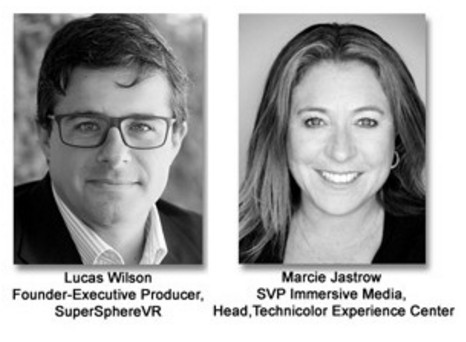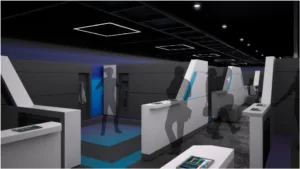The Hollywood Professional Association (HPA), which is now part of SMPTE, plans to host its annual Tech Retreat event in Indian Wells, California in a couple of weeks. One of the topics will be a special afternoon session on AR/VR on Feb. 20 called TR-X. We listened in to a webcast and question and answer session conducted by the organizers of the session; Lucas Wilson of SuperSphereVR and Marcia Jastrow of the Technicolor Experience Center.

In opening remarks for the webinar, Wilson and Jastrow said that TR-X is not a typical VR seminar, but a fact-based, action-oriented workshop to understand, engage, and plan for the future of VR as it becomes a part of an executable workflow and the journey of the story. Speakers from all aspects including game production, live action, 360 audio and the future of AR/VR will be there.
The webinar then shifted to answering audience questions such as, “why does VR create such an emotional connection?” Wilson answered this one but started by giving a little background on his company explaining that they have done about 60-70 VR deliverables so far, so he has some relevant experience here. He explained that they did an interview with Michelle Obama in the White House about year ago and they captured it in 360-degree video. He compared watching this VR experience to being in the White House vs. the 2D version of looking at the White House.
Jastrow noted the emotional connection many felt when immersed in the plight of refugees vs. just watching a 16:9 image. “Immersion matters,” she said. “It is about presence.”
Another question focused on the lack of standards and both agreed this was a big problem right now. Content needs to be mastered separately for all the various headsets and phone-based devices and it is impossible to get a consistent image. “If you can tell me how to ensure the red pixel on the Samsung Gear headset matches the one on my monitor, I want to know about it,” said Wilson. “There are way too many places along the chain where the image can get stepped on and we can’t control it. In addition, the displays and optics need a lot of improvement.”
Jastrow noted that they are creating color LUTs for each headset, but they need to know more about the distribution pipeline. “This is not like a video production where you just create derivatives and send it everywhere. It is much more complicated.”
Wilson also responded to a question by offering his definition of VR. He said the difference between 360-degree video and VR is that VR adds some interactivity and the ability to change the story. Jastrow considers AR, VR and MR as all immersive media and agreed that interactivity is what helps to define this new medium.
In terms of adoption, Wilson thinks it will be a few years before higher performance headsets are low cost enough to start to have a big impact on the market. In the meantime, mobile VR will drive the market. He pointed to a recent 360-degree video posted by SpaceX that received over 1 million views in the first few days.
In terms of workflows, both agreed that there are two kinds: game-based and live production. Live production is not necessarily live to air, but follows conventional video production techniques. Yes, the cameras are different and you have to stitch the images together, but you still have all the other elements of a conventional video shoot including audio, color, editing, etc. Some of the tools are different, but the pipeline is very similar.
Game-based content follows a more game developers workflow and uses those tools sets, although they did not provide much insight into this during the webinar.
Both also believe 360-degree audio is important in VR and needs a lot of work. Wilson said they are working with some very high profile musicians to try to understand this medium and create new listening experiences. Jastrow noted that this is her focus area right now and they are bringing in outside experts to try to improve this.
We also asked both what they thought were the top three areas of improvement that are needed in VR. Jastrow said compression was high on her list as well as latency and a better user interface and end user education. If you are not a gamer, you may not be comfortable with hand controllers,” she said. “While the technology needs to improve, good story telling can hide some of the inadequacies of the technology in the short term,” she continued.
Wilson said his top concern was hygiene. “Sharing a headset in a public space can be disgusting as people sweat in them and worse. I have to worry about this a lot. In addition, most headsets have bad optics, bad ergonomics and inadequate displays.”
The final question asked how they felt about location based VR. Jastrow said is was “awesome” and noted how she had just checked out the new IMax VR Center in LA which consists of a pod concept with players moving from room to room – and they had good hygiene.
Wilson called this segment “incredible” and said that in addition to the room-scale VR experiences, there are also the more stationary chair-based types.
Both concluded by noting that VR is alive and well in Hollywood with lots of content creation on-going. Come to HPA to learn more, they said. – CC
IMax Has Pods for VR Experiences

